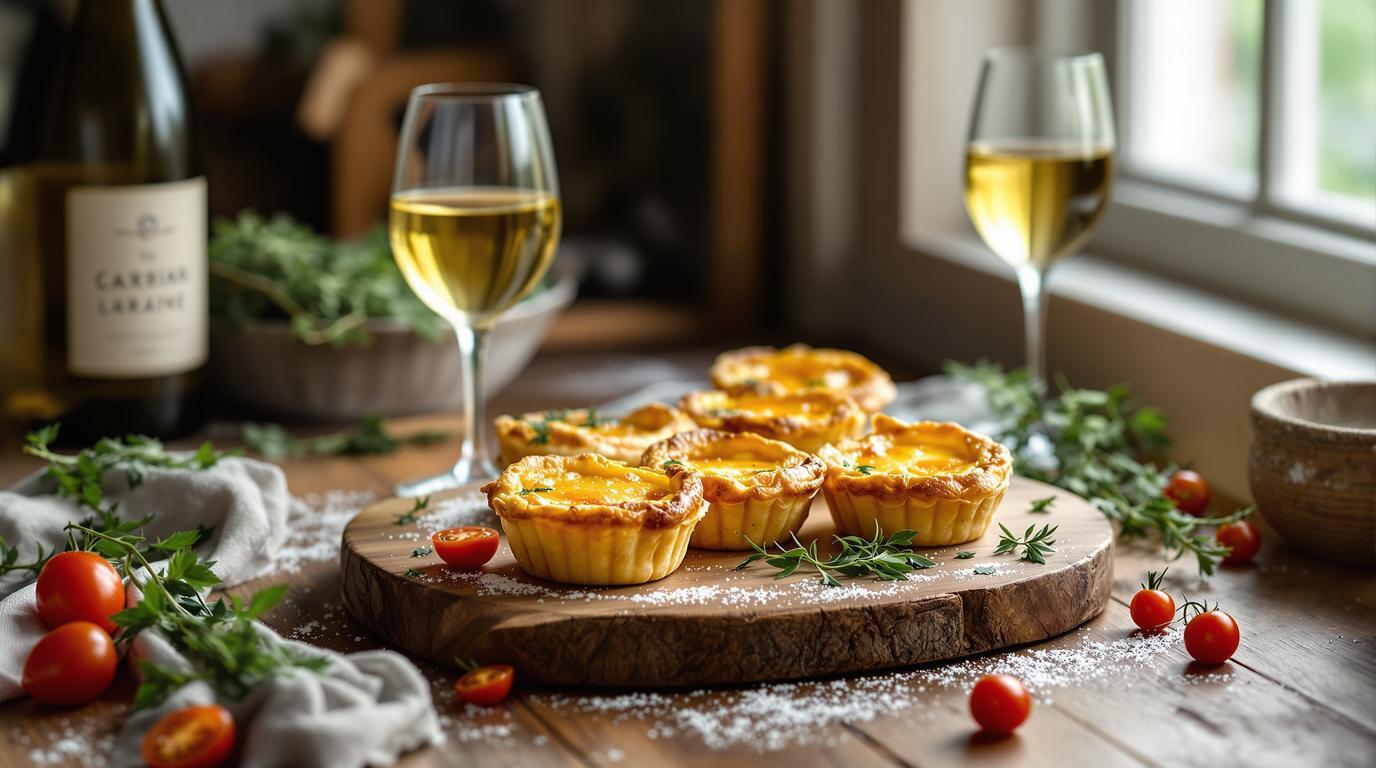There’s something deeply comforting about biting into a perfectly made mini quiche – that moment when the buttery crust shatters and gives way to a silky, savory custard. In my grandmother’s kitchen in Alsace, these little bites were called “les petites tartes Lorraine,” and they would appear like magic whenever guests arrived unexpectedly. What many don’t realize is that the original Quiche Lorraine contained no cheese at all – just eggs, cream, and smoky lardons in a tender pastry shell. Today, I’m sharing my favorite version of this French classic that’s been perfected over decades in professional kitchens while staying true to its humble roots.
The Story Behind Mini Quiche Lorraine 📖
Quiche Lorraine originated in the northeastern region of France, where my family has roots stretching back generations. The word “quiche” actually comes from the German “kuchen,” meaning cake – a nod to the region’s position along the Franco-German border. The traditional version was a simple affair: a rustic dough filled with eggs, cream, and smoked bacon. What began as a practical way to use leftover dough and cured meats evolved into one of France’s most beloved exports.
During my years at culinary school, I learned that while modern recipes often include cheese, purists maintain that authentic Quiche Lorraine should remain cheese-free. These miniature versions maintain all the richness of the original while being perfect for entertaining.
Essential Ingredients 🧾
For the crust (makes 12-15 mini quiches):
- 1½ cups (190g) all-purpose flour
- ½ cup (113g) cold unsalted butter, cubed
- ¼ teaspoon salt
- 3-4 tablespoons ice water
For the filling:
- 6 large eggs, room temperature
- ½ cup (120ml) heavy cream
- 6 slices thick-cut bacon (about 170g), diced
- ¼ cup (30g) shallots or yellow onion, finely chopped
- ½ teaspoon sea salt
- ¼ teaspoon freshly ground black pepper
- Pinch of freshly grated nutmeg
- ½ cup (60g) Gruyère cheese, shredded (optional for purists, essential for me)
Chef’s Note: While traditional Quiche Lorraine contains no cheese, I find that a subtle amount of nutty Gruyère enhances the flavor without overwhelming. For the most authentic version, simply omit the cheese. Short on time? Use store-bought pie dough or even phyllo cups for a convenient shortcut.
Step-by-Step Instructions 📝
1. Prepare the pastry:
In a food processor, pulse flour and salt. Add cold butter and pulse until mixture resembles coarse meal. Drizzle in ice water until dough just begins to come together. Form into a disk, wrap in plastic, and chill for 30 minutes.
2. Form the shells:
Preheat oven to 375°F (190°C). Roll chilled dough to ⅛-inch thickness. Using a 2½-inch round cutter, cut circles and press into mini muffin tins. Dock bottoms with a fork.
3. Blind bake:
Line shells with small pieces of parchment and fill with pie weights or dried beans. Bake 5-7 minutes, remove weights, and bake 2-3 minutes more until just beginning to color.
4. Prepare filling:
While shells bake, cook bacon until crisp. Remove to paper towels, leaving 1 tablespoon fat in the pan. Sauté shallots until translucent, about 3 minutes.
5. Assemble:
Whisk eggs, cream, salt, pepper, and nutmeg until completely smooth. Divide bacon among shells, followed by shallots and cheese (if using). Pour egg mixture to ¼-inch below rim.
6. Bake to perfection:
Bake 15-18 minutes until centers are just set and edges golden. Allow to cool 2 minutes before removing from tins.
Chef’s Secret Techniques 🤫
The difference between good and exceptional quiche comes down to technique. First, always chill your pastry ingredients – even the flour if your kitchen is warm. This creates those beautiful, flaky layers we’re after. Second, the egg-to-cream ratio is crucial; too much cream makes a soggy quiche, while too little creates a rubbery texture. My 6:½ ratio creates the perfect silky, custard-like interior.
When I was working at a bistro in Lyon, the head chef taught me to add the filling ingredients separately – bacon first, then cheese, then the egg mixture. This prevents everything from floating to the top during baking, ensuring perfect distribution in each bite. For the silkiest texture, strain your egg mixture through a fine-mesh sieve before pouring.
Serving & Presentation Tips 🍽️
These mini quiches shine equally bright served warm from the oven or at room temperature, making them perfect for brunch or cocktail parties. For an elegant presentation, arrange on a wooden board with fresh herbs and cherry tomatoes.
Pair with a crisp Alsatian Riesling or dry Champagne to cut through the richness. These quiches complement everything from a simple arugula salad with lemon vinaigrette to a full charcuterie spread.
For a complete meal, serve alongside a light pasta dish or roasted seasonal vegetables. Leftovers (if you’re lucky enough to have any) reheat beautifully in a 300°F (150°C) oven for 5-7 minutes.
Remember that the beauty of these mini quiches lies in their perfect proportions – every bite delivers the ideal balance of crisp crust and creamy filling. As my grandmother would say, “C’est dans les petits plats qu’on trouve les grandes saveurs” – in small dishes, we find the biggest flavors. Happy cooking! 🇫🇷
